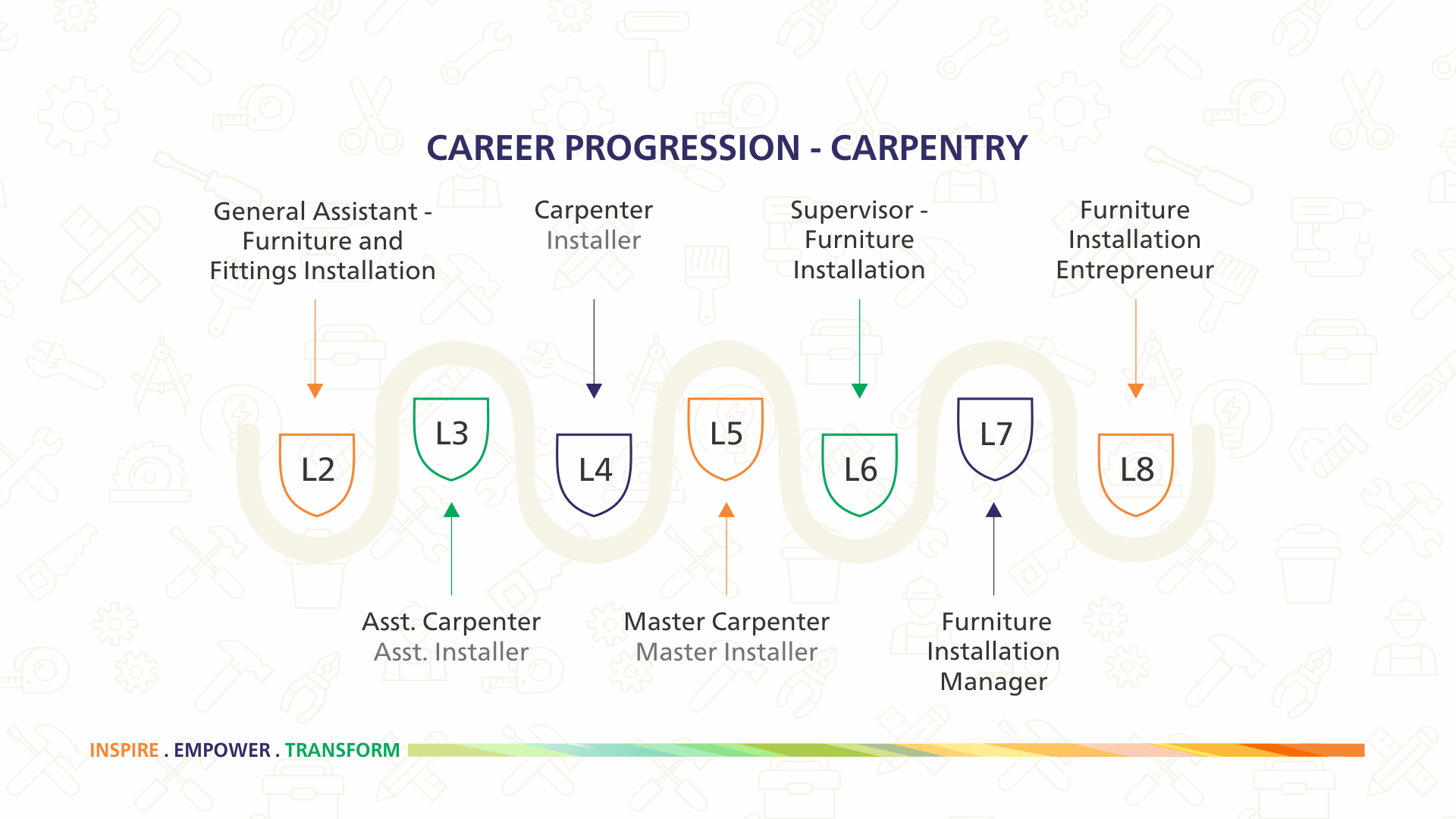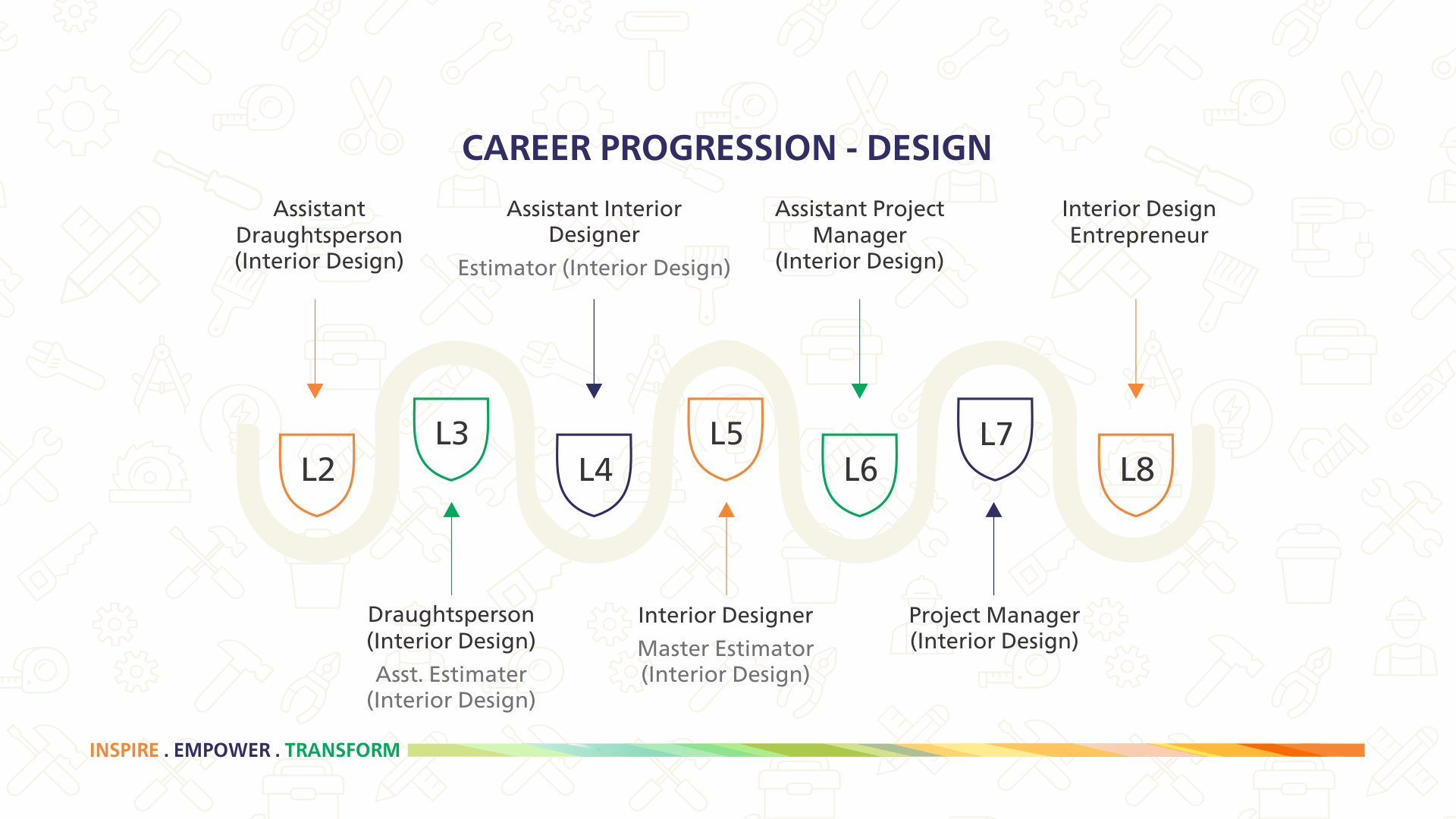The OM is a map of the sector that is created by identifying the sub-sectors and occupations. It is the product of the occupational analysis and is a visual representation of the sector's occupation/NSQF level hierarchy. OM helps in the identification of unique job roles that exist in the industry in each sub-sector.
Deciding on these titles is often not easy because different organizations use a range of different job titles. However, by bringing representatives of the sector together and encouraging them to think about typical organizational structures and functions, it is usually possible to develop a list of commonly agreed functional titles. Once these titles are clear and agreed, it may be helpful to collect a range of illustrative job descriptions(also called job profile) that will provide further background information for the functional analysis and NOS development.
Uses of the Occupational Map
- Provides a useful guide to show the technical and /or vocational education options available for interested individuals and employers and training providers.
- Used to identify job roles and progression, movement within the industry and into and out of the sector. This process also involves identifying trends and current and future drivers of change.
It should be noted that the organization of work will vary between the organized and unorganized sectors. In the unorganized sector, job roles may be particular or they may be multi-skilled. All the job roles that comprise occupations within an industry must be identified.
Career Progression Path
The career progression of different job roles has also been defined from the Occupational Map. The career progression path shows both horizontal and vertical progression in any occupation.
Functional Matrix
Functions' means the activities a person is expected to do as part of their job. Functions are not random activities. Functions must have a clear purpose and outcome that are valuable to an employer. Once the functions people are expected to perform are identified, it becomes easier to identify the standard they should achieve and the knowledge they need.
A detailed functional matrix establishes the unique contribution of each occupational area - what makes it different from all others. It gives a quick overview of the different functions of different job roles within one occupation. It shows the relationship between each job role within one occupation.
Functional Analysis
Functional analysis is one of the main tools used to define the nature of an occupational sector and the functions performed within it. This is an essential process in defining occupational competence and in setting boundaries between different occupations. This is essential to ensure that all primary (main) and secondary (sub-) functions are identified, that the relationship between them is clearly established and the direct contribution that they make to the global purpose of the sector is understood. The functional analysis helps to understand where one occupational area ends and another begins. The functional analysis is an essential process in defining occupational competence and in setting boundaries between different occupations.
Functional analysis allows the breakdown of any area of work until we see the functions that individuals are expected to perform – in other words what people need to be able to do. Once these functions are identified, further content of the NOS was developed.
The Board of Standards, NOS Groups and Stakeholders are approached to undertake the functional analysis of the shortlisted job role roles.




































